|
There are a number of animal shelters across the country which have the word “Ark” in their names. This is fitting when we consider THE Ark which housed animals to save them from The Flood. An Ark is also often referred to as something that provides safety and protection. When I think of animal shelters I see them all as Arks in some form and more generally, I see them as much like boats. Every animal shelter has a finite capacity, much like a boat. Only so many animals can be housed there at any give time. In a perfect world, those shelter are places which provide safety and protection. Also much like boats, shelters are not intended to house individual animals long-term; the hope is that the shelter is used as a transition location to get animals from their former lives to their new lives. It is a temporary place to stay. I realize the most animal shelters in our country were designed to destroy animals and not to save them. A few short decades ago, millions upon millions of animals were destroyed in our nation's shelters. It is estimated that in the early 1980s, about 17 million animals died in shelters each year. Yes, 17 million. That number has gone down drastically as our culture has changed in our country and as we have become smarter and more progressive about how we house animals who are lost, found running at large, seized by law enforcement authorities or who are just in need of a new home for some reason. While many tax funded animal shelters have no legal obligation to take owner surrendered pets, many do because it has become a public expectation that they will be safety nets for animals and because shelters want to be seen not as places of death, but as places of hope and new beginnings. I often but heads with people in the rescue community and with shelter volunteers regarding my criticism of shelters which continue to destroy healthy and treatable animals while failing to fully embrace programs to stop that outdated practice once and for all. I have been told that I do not have a right to criticize my local municipal animal shelter unless and until I have met certain criteria such as volunteering there X number of hours per week, fostering Y number of dogs or adopting Z number of cats. I simply do not agree. I have a right to speak out about how my tax dollars are used by municipalities without some litmus test to determine if I am worthy of free speech. One of the most common things I a told is that unless I am in my local shelter doing the same things rescuers do, I am only a keyboard warrior and my opinion has no value. News flash. I do volunteer for my animal control agency in the county where I live. Just because I am not active in all shelters does not mean that I do not support any animal control agencies and that I don't work to help animals find new homes. Even if I was not doing those things, I still think there is immense value in political advocacy for the sake of shelter animals and I know from a decade of experience that it is incredibly difficult work. I often lament that there are some in rescue who are so focused on A dog or B cat that they cannot see the bigger picture. I applaud those who rescue animals. They are some of the hardest working people I know and they are not compensated for their time. Most are so busy that they rarely do anything for themselves that others take for granted. Read a book. See a movie. I realize that time is short and we all pick how we spend our time. I just wish that those in rescue who have not taken the time to learn about No Kill programs and philosophies which save the lives of shelter animals would do so. Saving A dog or B cat is absolutely to be commended. But to me, it is like scooping water out of a boat that is sinking because there are holes in the boat. Those holes are created by our failure to implement programs to both reduce shelter intake and increase shelter output. Do we need rescuers to get animals out of shelters? You bet. One of the 11 elements of the No Kill Equation is rescue partnerships. But if all we do is keep focusing on getting out individual animals, and we don't take time to stem the flow of those animals into the system, we are doomed to repeat the process over and over and over. A shelter is a boat with finite capacity that we use to house animals temporarily to get them to safety. When our boats are taking on water, let's please stop long enough to find ways to just fix the boat. We can continue to rescue animals. But by plugging those holes with the programs which keep so many animals from getting in our boat in the first place and which get those animals out of the boat as fast as possible, we can save so many more and make better use of our time and our resources.
Please think about it.
1 Comment
 I have always considered myself an animal person. I grew up in an animal integrated household and my siblings and I were taught from an early age that all life has value. We always had rescued pets in our house and some years we had many of them. For much of my adult life, I considered myself fairly well educated on general animal issues. Like most people, however, I lived inside the bubble of my own reality. It wasn't until 2006 after we had our dog euthanized to prevent her from suffering that I had a personal epiphany about what happens in our nation's animal “shelters” using our money and for which we are blamed: the killing of millions of healthy and treatable animals. When Nathan Winograd published his ground breaking and controversial book in 2007, I was further changed. I still consider “Redemption: The Myth of Pet Overpopulation and the No Kill Revolution in America” to be compulsory reading for any animal welfare advocate. The content is just as valid today as it was ten years ago. As I have said before, Nathan did not “invent” the animal protection movement or even the No Kill movement as we know it today. That process began more than 100 years ago with Henry Bergh who founded what we now refer to as the American Society for the Protection of Animals. If you have not seen the documentary film which is based on Redemption, I really encourage you to watch it. Much like the book, the film is as much a history lesson as anything and it helps you understand how we got from a time in 1866 when Bergh was changing hearts and minds regarding compassion toward animals to our present reality of killing millions of animals. We kill far fewer shelter animals now that we did a few decades ago, but millions are still at risk each year and thousands die each day using our money. Since the time I became a No Kill advocate years ago, my views on the subject have really not changed at all. I think it is unethical for us to house animals in places we call shelters and then use tax dollars and donations to destroy healthy and treatable animals. As Nathan Winograd once pointed out, if we had never killed animals in our nation's shelters, but we started doing it today, what would people say? There would be incredible outrage for sure. The public would speak out en masse and the killing would stop. It is incredibly unfortunate that many in our society somehow tolerate or forgive the killing just because it has been going on for so long that people think there is no other way. We have been told so many times that the killing is due to a “pet overpopulation” problem that we don't question it. Animals don't die in shelters because of pet overpopulation. They die in shelters which are overpopulated with pets because the shelters have failed to embrace the very programs of the No Kill Equation set forth in Redemption more than ten years ago (and which have been known for much longer than that) to stop the archaic and outdated practice. For No Kill advocates, ending the killing of shelter pets is like drawing a line in the sand. You draw that line and then you do not cross it. You do not go back to the old ways no matter what. I have stood the line to end shelter killing for over a decade. I have stood that line along with contacts of mine from across the country too numerous to name. We are the animal welfare advocates in the weeds of grassroots reform and we speak with one voice, for the most part, as we seek to end shelter killing. Most of us promote the No Kill Equation because it can be molded and shaped to fit the resources of any community and because it has been proven to work in every place where it has been comprehensively implemented. Some of us promote the same programs of the equation even if we do not refer to it using the same terminology. We seek a time when the needless killing of pets in our shelters ends and we seek it with a sense of urgency. We all promote diplomacy in communities with regressive shelters which are still destroying animals needlessly. Although there is no polite way to say, “please stop killing animals,” we have always encouraged people to do what we call “the ask” first in an effort to gain the cooperation of shelter leadership and municipal officials toward changing the culture in shelters as a first option. There is truly no point in expending energy on what amounts to political advocacy if it's not necessary. In my own case, I wish the ask had worked. The path taken would have been much faster and much smoother if everyone could have cooperated from the start. The ask was denied and this led to years and years of struggle in which far too much energy was spent defending the continued killing when that same energy could have been used to stop it. There was a recent exchange on the social media page for an organization called No Kill Movement, of which I am a member. I, and other members of the organization, were referred to as a “radical wing” of No Kill shelter reform. At first I was confused by this and then I kind of laughed. Now I find myself both amused and annoyed. There is nothing radical about the No Kill philosophies I promote. And I have not changed in that regard in a decade. I would actually argue that I have become more tolerant and more diplomatic in how I interact with municipal officials and shelter officials because I have learned over the years which tactics work better than others in efforts to gain cooperation faster and I do volunteer work for animal control agencies which I support. So, what changed? While I, and other like me, have remained in place, standing the line, it is those around us who have changed. While we have continued to stay on topic and promote philosophies which bring an end to shelter killing now and not years from now, others around us have seemingly decided that it is more important to focus on planning and not offending anyone than it is to stop killing animals right now. Kindness is given a premium over urgency to save lives. One woman who proclaims herself an animal advocate stated that she “learned that what's effective in creating change is to get as many people as possible on board -- including city leaders, local organizations, and the public. There are situations where 'calling out' may be important, but in most cases the fastest progress is made by cooperation.” I'm glad that is her experience. Unfortunately, it is not mine and it is not the experience of most of the advocates with whom I interact. It would be wonderful if every community which operates a shelter where healthy and treatable animals are destroyed would stop doing that as a result of being asked to stop and through cooperative efforts which are free of drama, defensiveness and opposition. I hope that as more time goes by and No Kill becomes the norm in more places, community leaders will work to get ahead of this issue without having to be asked at all. Advocacy is hard work and I would like nothing more than for that work to not be required at all. Dare to dream.
In the meantime, call me a radical. Fine with me. Call me divisive. I don't agree with that, but that is your choice. I will instead call myself principled and committed to the same goals and standards I have been for the last decade. I still stand the line. And I am proud to do it with others like me who are working hard to help change our society using grassroots advocacy. As Margaret Mead so aptly said, “never doubt that a small group of thoughtful, committed citizens can change the world; indeed, it's the only thing that ever has.” Exactly. Puppy Mill Awareness Day is observed on the third Saturday of September of each year. It is a date set aside to help educate the public on the topic of “puppy mills” so that they understand what the phrase means and they can make better personal choices. Many organizations across the country will be holding events on weekends this month as they work to educate the people in their communities. I encourage everyone who either loves dogs or who is just interested in how tax dollars are spent to devote a little time to learning about the puppy mill industry. The key to ending this industry is public awareness and our own behavior; we must simply stop buying what the mills are selling and instead get our dogs from other sources like animal shelters, rescue groups and reputable breeders. (While I prefer for people to adopt or rescue dogs, I fully recognize that some people will insist on getting a dog from a breeder. I simply ask that they interact with a small scale breeder who adheres to breed standards, who ensures the dogs are well cared for and who would never sell dogs in a pet store). There is much disagreement about the phrase “puppy mill.” As I have written before, I consider a puppy mill any commercial dog breeding operation because I focus on the word “mill.” In a recent Supreme Court decision out of Missouri, a puppy mill was defined as a “commercial farming operation in which purebred dogs are raised in large numbers.” Smith v. Humane Society of the United States, 519 S.W. 3D 789, 801 (2017). I have been told by some that use of the phrase puppy mill is so offensive to some dog breeders that they equate it with a racial slur. I say that to take a description of a business operation and try to compare it to discriminatory words related to race is not only misplaced, but is surely offensive to those races which have been slandered through the use of slurs. A mill is an operation which has volume output, whether it is a paper mill, a textile mill, a cotton mill or a puppy mill. Not all puppy mills are created equal. Some are run by people for whom dog breeding is a family affair and has been for generations. Although they raise dogs in large numbers, the dogs are housed in comfortable buildings, they receive regular veterinary care, they are exercised daily and they are socialized to people. Although I do not approve of commercial breeding of dogs, I do acknowledge that some breeders do take good care of the animals they mass produce. Others, quite unfortunately, are nothing short of dog prisons where dogs are kept in small, cramped cages (most of which do not have a solid floor surface) and in which the focus is entirely on profit. The dogs do not leave the cages. They do not receive veterinary care and are not socialized to people. Many have severe physical and psychological issues even though they are “purebred” dogs and may be registered with the American Kennel Club or some other purebred dog registry. Contacts of mine who have been to puppy mills, and to the dog auctions used to market the dogs, tell me that it is a traumatic experience never to be forgotten. The sounds, the smells and the sheer volume of suffering are things which stay with you forever. The reality, however, is that most people will never be exposed to the conditions in which the dogs live and think very little about it. It is easy to see the cute puppy in the pet store window or on the polished looking website or the little dog in the store parking lot and think not one bit about where that dog came from. All puppies are cute and we are easily blinded by the cuteness we see. I have long thought that if there was a requirement that the dog being sold was displayed with images of it’s parents and images of the place from which it came (or perhaps even real world video of that place) no one would buy a puppy mill dog. Ever. So, how can you become aware about puppy mills? - If you live in an area where an organization is hosting a Puppy Mill Awareness event, I encourage you to attend. Most are family friendly and are appropriate for children because the organizations want to educate children in order to reach new generations of people who will someday share their homes with dogs. - If you do not live close to an event, I encourage you to take 86 minutes out of a day to watch the documentary film, “Dog by Dog.” This is a wonderful look into the money and power aspects of the commercial dog breeding industry which keep the factory farming of dogs alive and thriving. You will no doubt be surprised to learn how political this issue is even though it relates to “man’s best friend.” The film is available on a host of platforms including Netflix, iTunes, Amazon, Youtube, Vudu and Google Play. -Consider reading "Bark Until Heard." This book was written by a dog lover who learned some very hard lessons about the dog breeding industry and who shared those experiences with all of us. Becky's book is wonderful in many ways, but what I love about it most is that it will resonate with most dog lovers on a personal level and may help others find their own voice on behalf of dogs. - Take some time to educate yourself about puppy mills and about the commercial dog farming industry. I have a number of blogs on the topic here which you can find using the keywords which appear here on the right hand side of my blog page. I also recommend spending some time on the following websites: Harley's Dream - End Puppy Mills National Puppy Mill Project The Puppy Mill Project ASPCA Puppy Mill Information A time will come when puppy mills are simply part of our shameful past. For me, that day cannot come soon enough. I know a lot of people are working really hard to educate the public and to enact legislation in their cities and states to try to regulate the industry. As an example, California is very close to legislation which would ban all retail sale of dogs in pet stores. It is incredibly timely that AB 485 just passed in the California Senate by a vote of 32 to zero. The bill will now go to back briefly to the Assembly Floor for a concurrence vote on the amendments adopted in the Senate and then to Governor Brown's desk for signature. AB 485 states that as of January of 2019, "a pet store operator shall not sell a live dog, cat, or rabbit in a pet store unless the dog, cat, or rabbit was obtained from a public animal control agency or shelter, society for the prevention of cruelty to animals shelter, humane society shelter, or rescue group that is in a cooperative agreement with at least one private or public shelter. . ." This is huge news and it should be applauded not just by the residents of California, but by all of us who oppose the commercial breeding and sales of dogs and who care about how dogs are bred and treated. It is entirely possible that this legislation will be embraced in other states and will spread in a positive way. As they saying goes, "dare to dream." A large animal welfare organization held its annual conference recently. One of the sessions in the conference was called “Language Matters.” I was not in attendance, but I have heard from contacts who were there that much of the session related to use of the phrase “No Kill” to describe an animal sheltering philosophy. I have written before about the phrase No Kill and about the word “euthanasia” as it applies to ending the lives of shelter animals in terms of what those words mean to me. Following the conference, I engaged in multiple communications with other people across the country in which the word “attack” was used to describe my behavior and that of other animal welfare advocates. Use of that word to describe my own advocacy and behavior is completely misplaced. I have never personally attacked anyone regarding my beliefs about animals and how they should be treated. I have been critical of the behavior of some people and plan to continue to do just that for the sake of animals who cannot speak for themselves. I once prepared an open records act letter seeking copies of shelter statistics and the letter was described as a personal attack. It was not. It was a request for public records, plain and simple. The fact that the recipient of the letter chose to take it personally, as opposed a request for records created in the course of running her city department, is something completely beyond my control. These communications did get me thinking about use of some of the key words we hear in animal welfare advocacy circles and how some words are used correctly (or incorrectly) to describe behavior. I am not a language expert. I do think that words are important. In theory, they should represent easily understood concepts and have somewhat universal meanings. I realize that is not always the case, of course. For what it’s worth, these are some of the key words and phrases I use in my own advocacy and what they mean (or do not mean) to me. Advocacy is a noun which describes the act of the act of pleading for, supporting, or recommending something. Animal welfare advocacy relates to actions taken or philosophies promoted which relate to animal welfare. Attack is a verb with many meanings. As a verb, it means to behave in a forceful, violent, hostile or aggressive way, to begin hostilities against or to blame or abuse violently or bitterly or to try to destroy. It is not an attack to recommend or suggest that municipalities use tax dollars and donations in ways which are consistent with public values. It is also not an attack to opine that animal welfare organizations which take in millions of dollars each year spend some of those funds in ways which actually benefit animals in our cities, counties and states in a "ground level" type of manner. Criticize is a verb which means to find fault with, to judge or to discuss the merits and faults of something or someone. It is entirely possible to criticize a person or organization while still either holding that person or organization in high regard or while still having many positive views about that person or organization. Constructive criticism is an adjective which means providing criticism to help improve, promote further development or promote further advancement. It is constructive because it is intended to creative positive results, as opposed to being destructive. Criticizing an organization or providing constructive criticism about an organization is not an attack. It is communication intended to convey information about how operations or systems can be improved, particularly as it relates to how public funds are used for municipal purposes. Euthanasia is the act or practice of killing or permitting the death of hopelessly sick or injured individuals (such as persons or domestic animals) in a relatively painless way for reasons of mercy. When healthy and treatable animals are destroyed in animal shelters, that is not euthanasia. It is killing them or destroying them. To use the word euthanasia to describe ending the life of a healthy and treatable animal should be offensive to anyone who has ever had a beloved pet euthanized to prevent suffering. The two acts have nothing at all in common. Kill is a verb which means to cause the death of a person, animal or other living thing. When the lives of healthy and treatable shelter pets are ended, they are killed. Having said that, I have never called the people who end those lives as killers or murderers. To do so is inflammatory and serves no real purpose in terms of seeking and end to that behavior. Municipal accountability is as a general principle which means that governments (including municipalities) are answerable to the public and responsible for their actions, decisions and policies. Every municipality is subject to both criticism and constructive criticism by the public it serves for the manner in which it governs and in which it makes use of public funds. No Kill is a phrase which refers to an animal sheltering philosophy in which healthy and treatable animals are not killed for space or convenience using our tax dollars or donations. It does not mean never kill. In the No Kill philosophy, animals who are suffering or who are irremediably ill are euthanized for reasons of mercy. Dogs who are genuinely dangerous and who pose a public safety risk (as opposed to dogs who are scared, traumatized or undersocialized) are also destroyed when no rehabilitation or sanctuary placement is available. Some say that use of the phrase No Kill is divisive or offensive. I find it no more divisive or offensive than the killing of healthy and treatable pets who either were or could have been someone's beloved pet. The phrase is on the public radar already. More and more people now know what it means. In the community where I work, people know that No Kill means that animals in our shelter are not at risk of being needlessly destroyed. This is a culture they want. There is nothing at all divisive about use of the phrase to describe a geographic safe haven for shelter animals. A puppy mill is a commercial farming operation in which purebred dogs are raised in large numbers. Smith v. Humane Society of the United States, 519 S.W. 3D 789, 801 (2017). I have been told by some that use of the phrase puppy mill is so offensive to some dog breeders that they equate it with a racial slur. I say that to take a description of a business operation and try to compare it to discriminatory words related to race is not only misplaced, but is surely offensive to those races which have been slandered through the use of slurs. A mill is an operation which has volume output, whether it is a paper mill, a textile mill, a cotton mill or a puppy mill.
Shelter is a noun used to describe something that covers or affords protection. Although the word shelter is often used to describe buildings in which animals are housed, many of those places are actually holding facilities or disposal facilities and do not deserve to be called shelters at all. A true shelter is a save haven for pets which 1) treats them as individuals whose lives all have meaning; and 2) which treats them either as someone's beloved pet or being capable of being someone's beloved pet. It has been more than a week since Hurricane Harvey first made landfall in southern Texas. I heard last night that even more people were being evacuated from west Houston as water from more reservoirs was released by the Army Corps of Engineers. These are people who surely thought they had made it through the worst and they would not have to leave their homes. As I was watching the news, it got me thinking about how quickly many people have moved on both mentally and emotionally from the events of the last week. I'm always amazed at how short our attention spans are when it comes to disasters. Perhaps we are too easily swayed by news cycles. Perhaps we are just so focused on what is on our personal radar that we become callous to the tragedies of others which are far removed from our own lives. We see the images, hear the stories, maybe make a donation or two and then are back to normal for the most part. If you have never lived through a natural disaster, it can be hard to have true empathy for those who have. The images and news reports simply cannot do justice to the scope of the event in terms of structural or material losses and will never do justice to the human toll taken on those who have lived through it. Natural disasters change lives forever. They become a demarcation point between “before” and “after.” What life was like before the flood, tornado, earthquake, fire. What life is now after the flood, tornado, earthquake, fire. I don't expect everyone to think about what has transpired in Houston and other affected areas every day. I do think that those of us who have not been personally affected by the disaster owe it to those who have been to learn from what has taken place. There are lessons to be learned both in terms of our personal lives and in terms of how we want our country to handle disaster response in the future. Lessons Learned in Terms of Disaster Response A lot of lessons have been learned from prior hurricanes. When it comes to how we manage companion animals, many lessons were learned from Hurricane Katrina, leading to enactment of the PETS Act. I was not involved in the response to Katrina, but I know people who were. People like Mike Fry of No Kill Learning who wrote the following in his blog for No Kill Movement entitled, "Harvey is Not Katrina: Lessons from the Trenches": Following Katrina, a sizable group of people (including myself) worked diligently to ensure that the PETS Act was passed into law, providing safety and shelter for people and their pets in disasters. During Katrina, pets were forcibly taken from their evacuating families at gun point. Following Harvey, pets are being welcomed into evacuation shelters. Though there were some false starts, and some families with pets were initially kept out, a federal judge quickly set that right and gave notice that pets were to be accommodated. That has led to proactive life-saving of unprecedented proportions. When people can bring their pets with them, they are more willing to take shelter. If they can't, they often don't and needless human and non-human loss of life results. Much has changed since Hurricane Katrina regarding how people are sheltered with their pets as opposed to being forced to leave them behind. One thing which was apparently not learned from Katrina was 1) how to manage how pets are rescued and by whom; 2) how rescued pets are accounted for; and 3) where those pets can and cannot be taken. I know of a number of groups which went to the predicted path of of the storm before it made landfall or shortly thereafter which pulled animals from shelters in the predicted path of the storm. They did this to keep animals safe, but also to free up space in those shelters for owned animals who may later be displaced. I support that type of rescue. Because there is no centralized system used to track animals helped by a myriad of organizations, however, there were will large numbers of owned pets who will never be accounted for. My sources who live in the Houston area or who are there helping with disaster response tell me that some organizations are taking potentially owned companion animals out of the state. At a glance this may look like a good idea; the focus should be on saving lives. I would like to think the organizations doing this mean well with the possible exception of PETA which I fully expect will kill each and every animal it “rescues.” But here's the thing. Those animals belong to someone and we owe it to those people to do everything we can to keep potentially owned pets in the immediate area so people can find them. When I called the practice of removing potentially owned animals from the area “pet looting” on my Facebook page recently, I got a lot of mixed reactions. Some from outside the area are quick to assume that pets are displaced from people due to some form of irresponsibility and that those people don't “deserve” to get their pets back. Not so fast. Here is the scenario I posed on my Facebook page: You're at your house near Houston. It is not yet flooded. You think you're going to be safe. The Army Corps of Engineers opens a dam and with very little warning your house begins filling up with water. You frantically start grabbing things to load up in a vehicle in hopes that you can get out in time. In the process of loading things into a vehicle your dog gets out. You had him leashed and with you all the time, but he's scared and feeding off of your fear so he pulls away from you. You call for him. You search high and low, but you have to go. Authorities come along, telling you to get in a rescue vehicle right now. You say, "but I don't know where my dog is," and they say, "don't worry. Someone will find your dog and take care of him." You panic and you leave as you call out for your dog. I think it is easy for people to find fault with those who did not leave the Houston area with their pets or who were displaced from their pets. I get that. But it's not always the result of irresponsibility. How in the world are people supposed to find their pets if they've been taken away to another state? What website are they supposed to check? Where are they supposed to go? Who can they call? Because there are no answers to any of those questions, my hope is the lessons learned from Hurricane Harvey include how we account for companion animals handled in any way by any organization whether they are housed locally, housed in nearby areas or removed from the state. I honestly don't know how we would go about tracking animals like we track people. I trust there must be some way to do that and that just hope that there are some people "out there" who are already working on this issue.  Personal Lessons We Must Learn The personal lessons we must all learn are a lot less complicated than trying to figure out a solid disaster response plan for all pets. The first and most important thing all of us can, and should, do is to have our pets microchipped so they can be identified if they are displaced from us for any reason. You may never have to survive a natural disaster, but you may still have a pet go missing due to an open door or open gate. You may have a dog or cat flee in fear due to fireworks. Your pet may be stolen from you. The best way to ensure your pets can be identified is using a microchip which is implanted under the skin and which contains a unique number which can be traced back to you after you have registered it. Unlike collars or tags with may fall off or be removed, the microchip is subcutaneous and can be scanned by a host of authorities from animal control personnel to rescuers to veterinary offices to law enforcement authorities. The cost of having your pet chipped is nominal compared to the costs you may incur trying to find your pet, not to mention the emotional and psychological toll it may take on your and your family. A microchip is not a GPS device (although those are available, with a limited battery life) but it is the best possible way to ensure your pet can be identified quickly and easily. 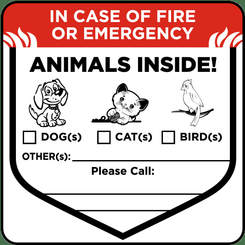 The second important thing all of us can, and should, do is to simply have a plan in the event of a natural disaster. If you had to evacuate an area, where would your pets go? If you were away from home when a mandatory evacuation order was imposed, how would anyone know that you have pets in your home or yard? Do you have friends or family who could house your pets for you if you could not find space in a FEMA shelter and take your pets with you? None of us likes to think we will ever have to endure a natural disaster and go through what the people of Texas have endured in the last couple of weeks. We have fires all over. We now have earthquakes in places where they never occurred before. We have tornadoes in New York. For the sake of all of your family members, both human and animal, please have a plan and please prepare for the worst. And while you're doing all of that, please stop to remember that there are people in Texas who are suffering. Their lives have been forever changed. Have some compassion and empathy for those people and don't be so quick to judge them. You cannot possibly say that you know how you would behave under extreme stress unless you have lived through it yourself. The image below? That's our tornado shelter. I have my plans. Do you have yours? (flooding image courtesy of Illinois Public Media)
|
AuthorI am an animal welfare advocate. My goal is to help people understand some basic issues related to companion animals in America. Awareness leads to education leads to action leads to change. Archives
July 2024
Categories
All
image courtesy of Terrah Johnson
|
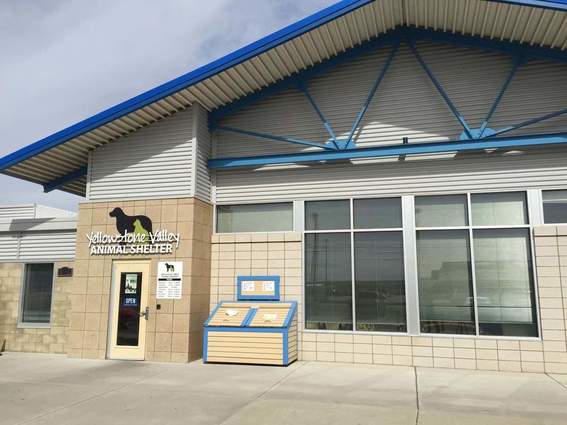

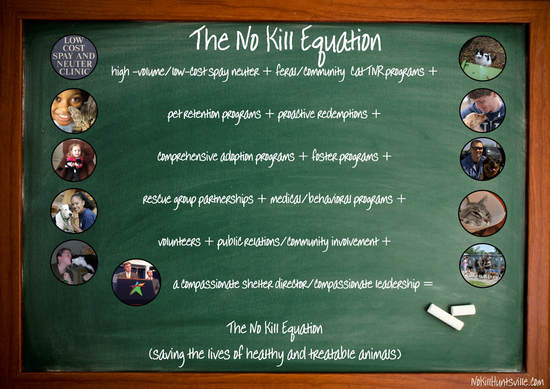

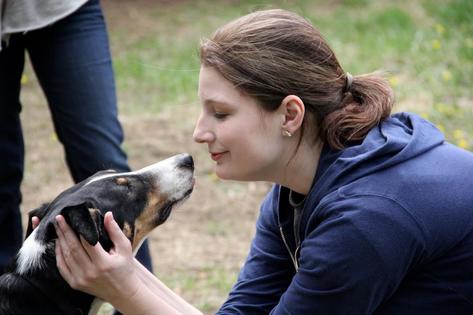


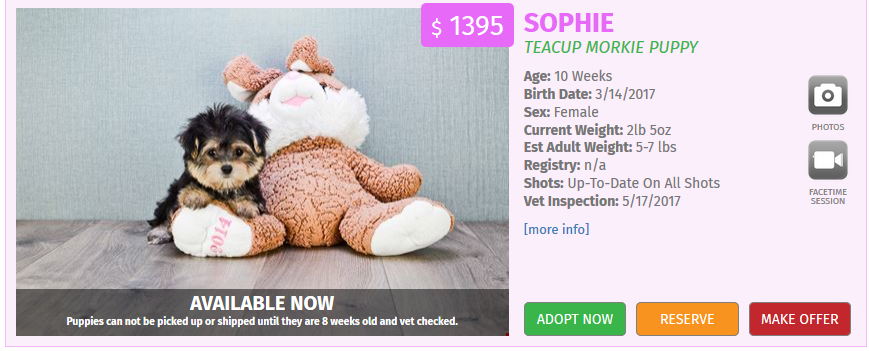
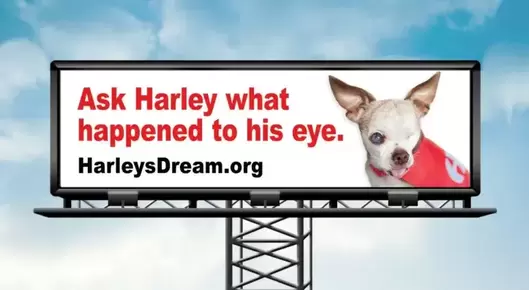


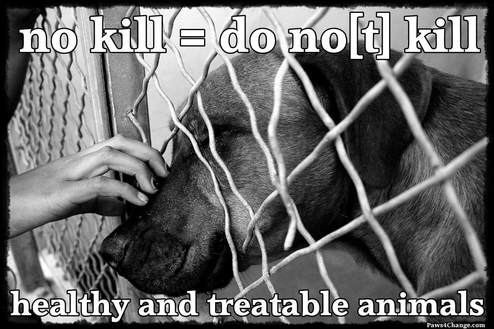
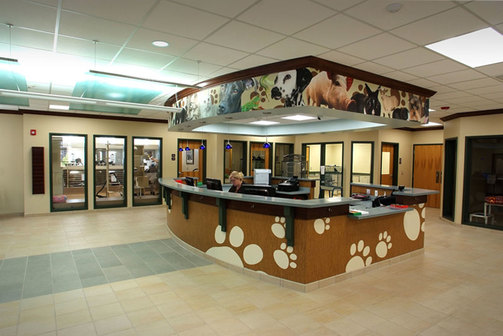
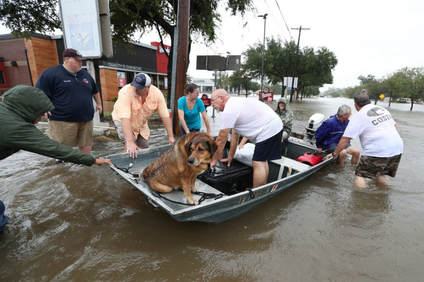
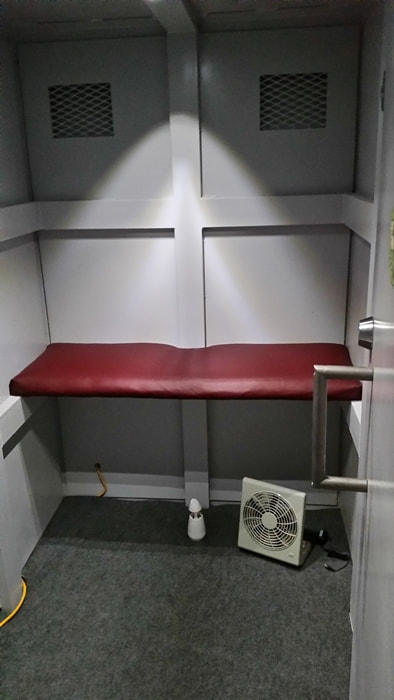
 RSS Feed
RSS Feed